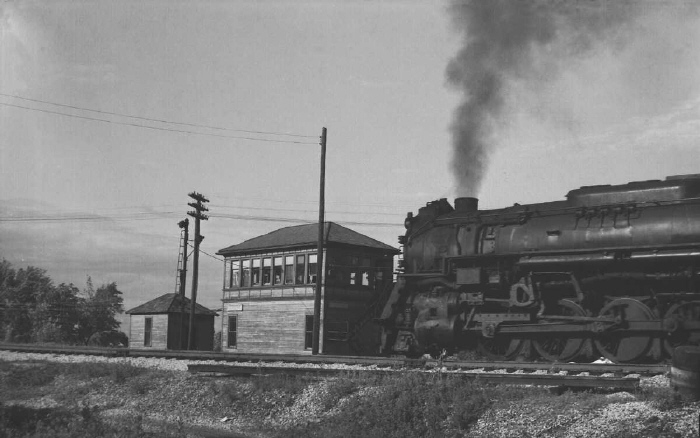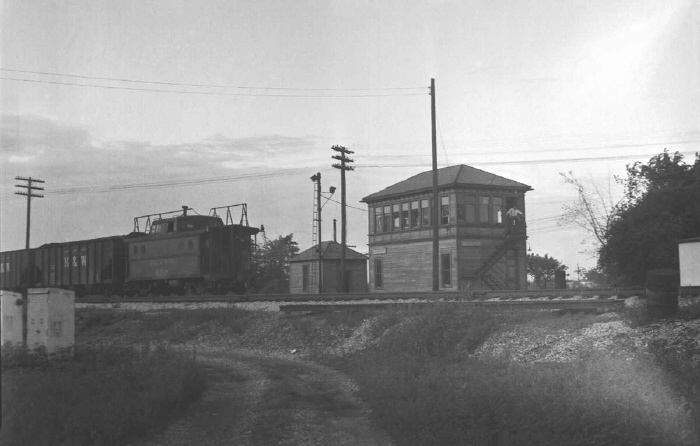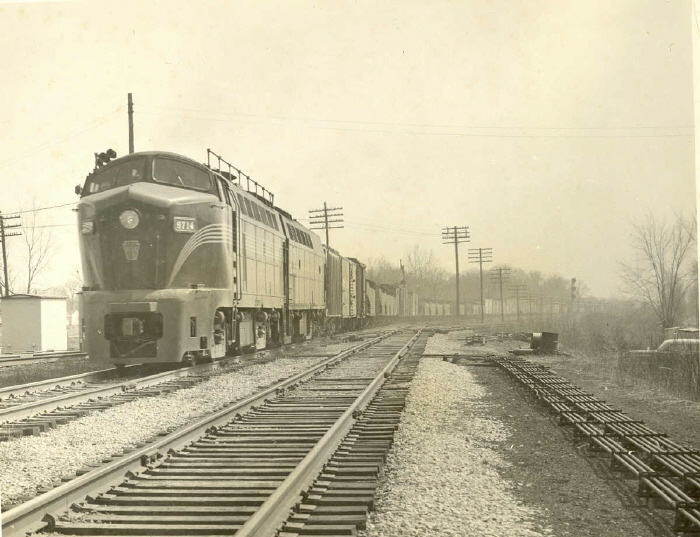Action at the Worthington Tower
In
the 1950's there was always something going on at the Worthington tower.
There were 10-12 NYC passenger trains a day that would blow through at
60-70 mph. As late as 1955 there were still steam passenger
locomotives in use. The NYC would also have a small number of
freight trains and an occasional local that serviced the Potter Lumber Co.
in Worthington. In 1955 freights and the local as well as a few passenger
trains were powered by diesel.
On the Sandusky Branch, as long as the lakes weren't frozen, there
would be many coal trains through out the day. There would also be a
few non-coal trains as well as a daily local that went up one day and
returned the next. Up until late 1957 steam ruled, mostly J1/J1a's,
H-10s and of course in 1956 Santa Fe 5011's. Occasionally we would see an
I-1 used as a helper. The Sandusky Branch hadn't had a passenger
train since the early 1930's. Following are some photos taken in the
1950's and early 60's.

The Cleveland Mercury hits the diamond and hits is
the right word. Niagara #6020 is northbound. The tower is off
camera to the left. Photo by B.J. Kern taken around 1953.

A Northbound coal train just past
the diamond.

Two northbound Pennsy J1's crossing the diamond at a more leisurely pace
compared to the Mercury.
In the mid distance can be seen the semaphore signal and crossover.
The crossover will take a train that is opposing traffic and switch it to
the proper track. It was also used by the northbound local to gain
access to the Worthington team and coal yard track.
In the far distance to the left of the semaphore is the Worthington Coal
and Supply Co. office. To the right of the semaphore, the
light colored peaked-roof building was the Pennsy freight house and behind
that further to the right is the Ohio Railway Museum car barn.

One of the jobs of a tower operator was to look over
all passing trains to check for hot boxes, dragging brake gear, flat
wheels and anything else that might cause trouble. The operator
often stood on the stairs to observe northbound trains.
The dirt and stone road in the foreground was how the
operators got to work. The camera is pointed northeast showing the
turn-around loop. They drove on the old CD&M right-of-way from
Colonial Avenue to reach this point. After the Ohio Railway Museum
rebuilt the track on the CD&M right-of-way the Pennsy built a new access road on the east side of the
tracks that was entered from Lincoln Avenue.
Three photos above take by Alex Campbell in 1956.

After steam was abandoned a variety of diesels were used on the Sandusky
Branch. Here are two Baldwin shark nose diesels with a merchandise train. The tower is on the left, off camera.
This shot gives a good view of the pipes used to connect the tower
levers to the switches. The pipes on the right control two
semaphores, two switches and one derail. Photo by David Bunge 1957.

Photo taken from the tower steps looking south.
When this photo was taken the Sandusky Branch
was owned by the N&W RR. The Pennsy's semaphore signals have
been replaced with N&W style signals and the track has been upgraded with
welded rail and new ballast.
The Pennsy retained trackage rights on the Sandusky Branch after it was sold
to the N&W. This Pennsy train has two "covered wagons" for motive power.
Photo by David Bunge take about 1964.

This is a shot taken just north of SR 161,
looking south. The tower can be seen in the far distance. The photographer is standing on the NYC passing
siding close to where the Worthington Big Four depot once stood. A
Pennsy Detroit - Columbus freight is waiting for clearance to cross the
diamond. The picket fence on the right belonged to the Potter Lumber
Co.
The area between the NYC and now N&W is clear of vegetation. Today
it is a jungle. That area was graded in 1916 and in forty plus
years little vegetation had taken a foothold. I suspect the cinder
fall out from all the steam locomotives retarded plant growth. After
the steam was gone the plant growth started. Photo by David Bunge
taken around 1960.
Previous ***
Next






